Abstract
The objective of this article is to design an evaluation proposal implementing gamification tools that promote motivation and meaningful learning of Mathematics in students. For many of the students, Mathematics is synonymous with frustration, discouragement and apathy, since they consider it a difficult, boring, abstract subject with little practical application. In this context, the use of digital evaluation applications such as Kahoot and Quizizz is proposed, which present a mechanic that allows to easily use elements of gamification as a game, participants compete with each other and receive immediate feedback on Its performance. Furthermore, it allows motivation to be inserted as a transversal axis throughout the educational process. The methodology is based on three phases: the first is the research design where the mixed approach was established; The second phase consisted of collecting information for both the diagnosis and the development of the proposal. Among the techniques used were the surveys aimed at teachers and students, observation cards, micro-curricular planning and note recording. The results obtained were to consider evaluation as a comprehensive, systematic and systemic process and that through gamification has contributed considerably to the significant learning of mathematics in students.
Keywords: Digital Toolsevaluationgamificationmeaningful learningmotivationmathematics
Introduction
A Subsection Sample
Assessment is an essential innovation tool, so that a change is generated in favor of more meaningful learning for students, the teacher must establish a more creative way and return to it, investing more pedagogical and technological resources in order not only to innovate but to reach a satisfactory evaluation in favor of learning content. The Ministry of Education mentions that, within the evaluation of student performance, teachers must apply various instruments to measure student attitudes and skills in response to the educational process and its application in daily life.
The educational system regarding the evaluation process is constantly changing, author as (Coll, 2008). He mentions that “ICT is presented as a powerful instrument to promote learning, both from a quantitative and qualitative point of view” (p. 2).
Technology focused on education has a set of resources, processes and information and communication tools applied to the structure and activities of the educational system (González, 2015). Sosa Díaz et al. (2010) show that educational practices aligned to ICT, when properly integrated, potentiate the teaching-learning process; hence its importance in education, because it has some advantages such as: applying new learning methodologies, using digital tools for planning and teaching, saving time preparing educational material, students interact, play and learn from various platforms; in today's society one of the methodologies to achieve meaningful learning,
According to Valverde (2012), he mentions that play is part of the emotional and cognitive development of the human being, it motivates the dimensions of being, knowing and doing, consequently its use as a learning tool has a promising approach both for teaching and reinforcing knowledge. As for the development of skills, problem solving, collaboration or communication, Vargas (2015) asserts that by incorporating the game into the learning process, the transmission of content is participatory, interactive and focused on the interests of the students.
Currently, gamification arises, a technique that refers to the use of game design elements in non-game contexts (Deterding, 2011). Gaitán (2013) mentions that “Gamification consists of transferring the dynamics of games in the educational field” (p. 15). That is, it is a learning technique that transfers the mechanics of games to the educational-professional field in order to achieve better results, either to better absorb certain knowledge, improve some skill, or reward specific actions.
Parente (2017) mentions that the impact of gamification also reaches the educational world, since the same techniques are applied to the training process and, in this case, its implementation should go even faster, since the pedagogical system has been evaluating video games for some time as active elements of training, replacing many study materials with video games, which are quick, light and fun to transmit knowledge.
There are several free applications that could be used for formative assessment, Socrative (exams, surveys, gamification, indicators); Kahoot (gamification questionnaires, surveys); Quizizz (quizzes and words, cultural games, etc.); among others; (Artal, 2017) In his article he mentions the advantages of free software, its implementation in the classroom is simple and does not entail any added cost. It should also be noted that these new tools allow Gamification to be used as an integrated teaching methodology within the “Flipped Classroom” educational strategy.
Therefore, its implementation in the classroom is relatively comfortable and encourages student participation and motivation, allowing them to be actively involved. Thus its proper use produces a stimulus in the student, improving the perception of their academic tasks
On the other hand, Macias (2017) affirm that "in the educational field, learning mathematics is very complex for most students", which causes its high failure rate. This premise is correlated with the results of the PISA report of the (Ministerio de Educación del Ecuador, 2018), which indicates that 70.9% of students do not reach level 2, categorized as the level of basic performance in this subject. This motivates teachers to look for proposals that break the lines of the static and conventional, and that allow the development of skills, for this reason Gamification has become an attractive alternative since it responds to the interests of students in the game and it offers the possibility of learning by playing (Werbach & Hunter, 2012).
For the reasons stated above, this article aims to implement gamification in assessment using free digital applications that allow teachers to use them as a pedagogical tool to positively influence students to achieve the specific objectives of meaningful learning of mathematics and motivating through a game dynamic, the evaluation process.
The design of a gamification proposal will allow to start methodologies where the participants generate real situations of play in relation to the achievement of school contents and objectives during the development of the gamified activities, that is to say that it is a still novel methodology concept due to the fact that it has been applying for a few years in our educational system; the functionality of two digital educational applications (Kahoot and Quizizz) implemented in the educational field within the assessment, will change the process of teaching-learning of Mathematics in students and inserting motivation throughout the educational process. (Velasco et al., 2020)
Problem Statement
-
The evaluation is a process that allows evaluating the level of performance in the student's training; In both students and teachers, the evaluation process becomes a synonym for tension, nervousness, repression and even discrimination, by not responding to the demands for each content.
-
According to Navarro et al. (2017), evaluation as a component of the teaching-learning process focuses the attention of managers, teachers, students and parents, given its relevance in publicizing the results achieved in student training, the quality of teacher and the effectiveness of the educational process.
Research Questions
Does the implementation of gamification in the assessment process using digital applications allow teachers to use them as pedagogical tools to positively influence students in order to meet the objectives of meaningful learning in mathematics?
Purpose of the Study
Implement gamification in the evaluation process using free digital applications that allow teachers to use them as a pedagogical tool to positively influence students by achieving specific objectives of meaningful learning in mathematics.
Research Methods
This research has a mixed (qualitative-quantitative) approach, an experiential introspective approach with a documentary, exploratory, descriptive, explanatory, quasi-experimental and comparative methodology; relating technology and the evaluation process of the 10-year-old students of the “Vicente Fierro Educational Unit of the city of Tulcán, Carchi Province”. For this purpose, three phases were established: research design, information gathering and proposal.
Phase 1: Design Research
-
In this study it was determined as a population: six teachers from the area of mathematics, 156 students from the tenth years of Higher Basic General Education of the “Vicente Fierro” Educational Unit, of which 78 students will be the control group and 78 practical group, the They were directly involved in the implementation of an assessment tool based on digital applications such as Kahoot and Quizizz to achieve meaningful learning in mathematics.
Phase Information Research
-
The information collection was carried out since September 2019. The documentary review was carried out in Google Scholar and in the indexed databases Ebsco, Scopus, SCimago and Scielo, it was accessed through the virtual access of the UTN library. References related to the study topic and its key words such as gamification, digital tools, evaluation, motivation, learning were obtained. Using the worksheets, the most interactive digital assessment tools were selected in order to identify the acceptance of implementing gamification in the assessment processes. Surveys aimed at both teachers and students, class observation cards.
-
The study was carried out with students from the tenth years of higher basic education, a control group with strategies and traditional assessment instruments, and the practical group participated directly in the implementation of an assessment tool based on free digital applications such as Kahoot and Quizizz. This allowed knowing the degree of acceptance and motivation for learning mathematics, the analysis was performed with the report of the first quarter grades of the 2019-2020 school year. Gamification
Gamification Proposal Design
With the data obtained in phase 1 and 2, a proposal was designed to integrate gamification into assessment strategies and instruments for teachers in the area of mathematics to use. Free software was used with digital gamification applications such as Kahoot and Quizizz because they are free and easy to learn; this type of assessment instrument facilitates teaching-learning for mathematics teachers and for students the development of mathematical logical reasoning skills and high motivation (Vergara Rodríguez et al., 2019).
According to the author, in his study he mentions (Artal, 2017) that these new tools allow gamification to be used as an integrated teaching methodology within the educational strategy "Flipped Classroom". This new pedagogical approach consists of scheduling less active tasks for students to carry out outside the classroom and reserving class time for the series of activities that require greater participation and interaction.
In the comparative analysis carried out among the most used tools, it was observed that Kahoot is a well-known application and offers the possibility of turning the evaluation into a game element that allows the student's motivation to carry out this process, and can also interact during of a class with students around skills. In it, the student can interact with the teacher, who at the same time is in charge of designing the possible questions and answers; It has a quite attractive appearance, since it can arouse the interest of the students through animations, background music, etc. The Figure
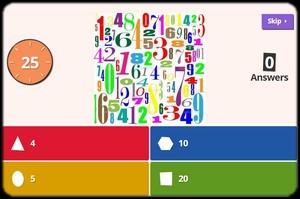
The Quizizz application allows students to provide a continuous and gradual review of the subject consolidating meaningful learning class to class with a review of previous consolidating their knowledge, this shows us the questions and answers on the projected group main screen, but each player receives questions and responses regardless of their peers. in a different order each participant. This ensures that the student does not copy these questionnaires, to focus on their own questions, responding to the rhythm you want to display Quizizz from the mobile device of the student.
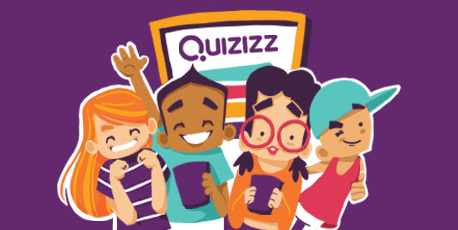
Findings
Based on the documentary analysis, the references related to the study topic were able to clarify and describe the two variables: 1) gamification as an evaluation tool and 2) meaningful learning. The observation and comparison analysis between the Kahoot and Quizizz applications, after having been put into practice, determined criteria that must demonstrate legitimacy and be in accordance with the function and the object. The characteristics of these two evaluation applications showed that there were differences in the presentation of questions, feedback, speed of progression and method of the questions, technical requirements, etc. As observed in table
Teaching parameters
In the research that was carried out on the six teachers in the area of |mathematics, both in the classroom observation cards and in relation to the applied survey, it was possible to observe the repetitive and traditional evaluation strategies used by the teachers, as shown in figure
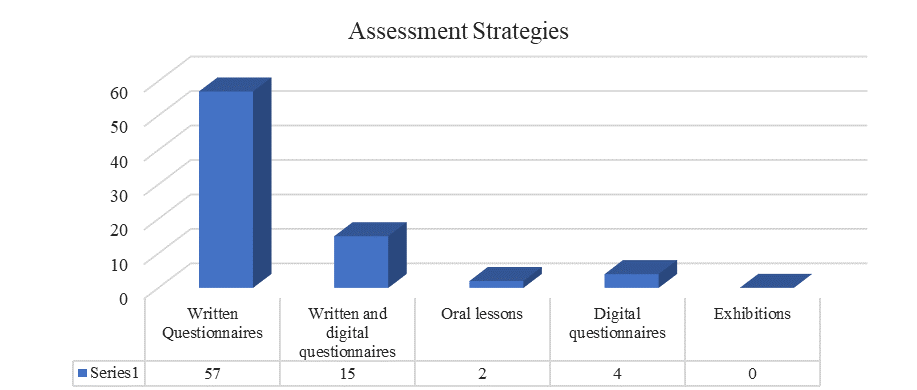
The importance of using this type of assessment tools was observed that at present it has expanded in the educational sector, given that they are easily accessible programs and free software, on the other hand, the use of these teaching tools allowed to increase the factor of Motivation of the student since by means of the fun games and the revision of a questionnaire or a debate during the game they can make these activities exciting and attractive for the students, also the teacher got good feedback with the degree of assimilation of the subject of mathematics and thus achieve meaningful learning.
In the experience that was applied to the use of this type of assessment tools that are observed today has expanded in the education sector, since they are easily accessible and free software programs, on the other hand, the use of these teaching tools allowed to increase the motivating factor for the student as through fun games and review of a questionnaire or discussion during the game may cause these activities are exciting and attractive to students, and the teacher got a good feedback to the degree of assimilation of matter of mathematics and thus achieve meaningful learning. The Figure
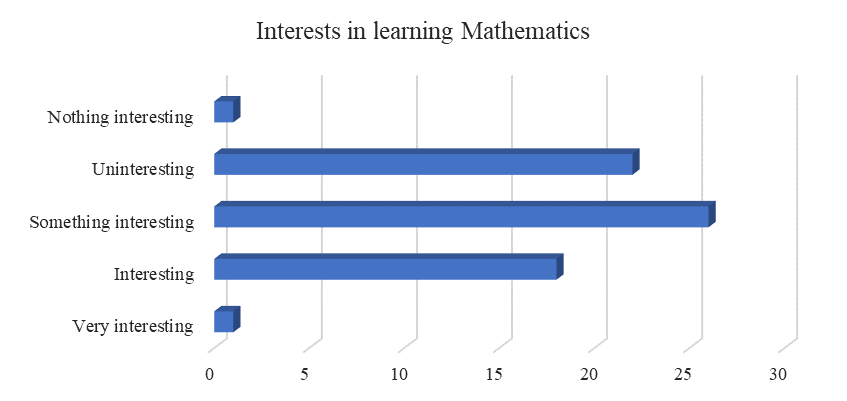
The instrument consisted of a questionnaire. Ten questions were asked to the students regarding the use of the two evaluation tools proposed, in order to analyze their opinion on the use of these, from the degree of motivation they arouse to the perception of their usefulness for content evaluation, in addition to the positive / negative effects of the tools used in gamification activities with respect to meaningful learning of mathematics, peer interaction, student-teacher interaction and the problems encountered during implementation and the solutions to these problems and comments provided. The next most relevant questions in this research are:
In your opinion, have you found positive results when using the Kahoot and Quizizz applications in the math subject?
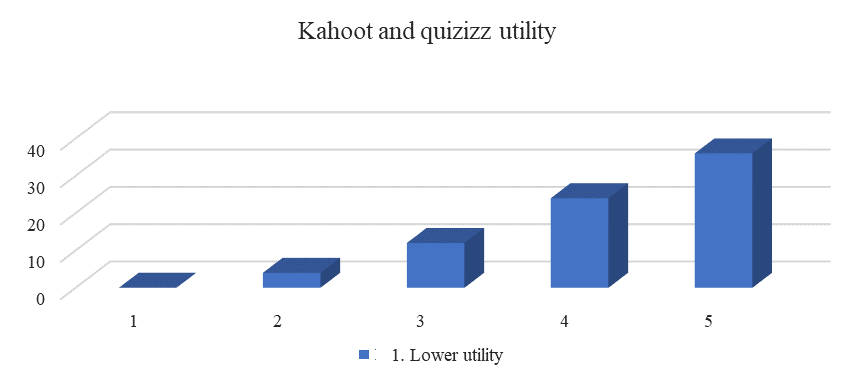
The students answered positively the use of digital tools, thanks to this, these results can be used to try to adapt the methodologies as best as possible to their interests and needs, as shown in figure
Comparative Analysis Motivation-Learning
The proposal to implement gamification tools in the classroom is relatively comfortable and encourages student participation and motivation, allowing them to be actively involved. Thus its proper use produces a stimulus in the student, improving the perception of her academic tasks. The student's role changes from a passive behavior (master class) to an active attitude (Flipped Class). In this way, the classroom time is destined so that the student can assimilate the contents, carry out academic tasks, work in groups, solve doubts and thus achieve meaningful learning. Motivation as a transversal axis in the educational process can be observed in figure
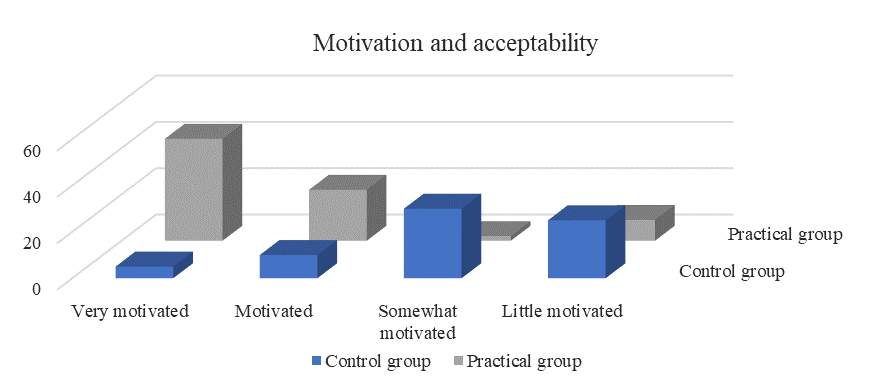
To ensure that students participate in a playful and interactive way, since a traditional survey printed on paper can be boring, it is necessary for the protagonists to adapt the practices that actively involve the student, making gamification a primary technique for thus motivate and achieve meaningful learning. Acceptance of digital assessment tools is observed in figure
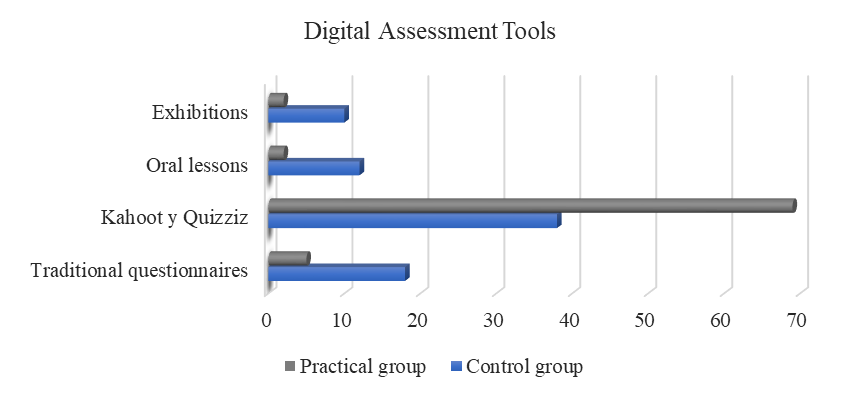
Conclusion
-
The effectiveness of Kahoot and Quizizz as an evaluation tool and its implementation with the practical group of research suggests that the two applications show satisfactory operation and fulfill their purpose.
-
Gamification as an assessment tool through Kahoot and Quizizz allows students to learn mathematics significantly in a dynamic way.
-
Through gamification the erroneous concept of evaluation has been eliminated, which was to measure, discriminate and generate apathy in students; giving way to a more comprehensive and formative concept; Due to acceptance, the student presents a positive and participative attitude in the math subject with this type of tool and almost all the students enjoy playing and learning simultaneously. The students comment that these tools help them to consolidate the contents that are taught in the classroom through a more pleasant methodology and that departs from the traditional expository classes, in which they tend to lose interest.
-
The application of gamification as an assessment tool has allowed a considerable increase in behavior and academic performance in the practical group; These applications constitute a highly efficient assessment instrument, in the sense that they automatically, instantaneously and systematically provide a large volume of data that enables the immediate detection of problems for prompt resolution by the teacher.
-
Meaningful learning can come through gamification as an evaluation tool since it is a learning technique that is based on applying the elements of a game to achieve the objectives of the curriculum and to evaluate processually.
-
Although in this study it was not proposed to closely monitor the evolution of each student throughout the course, the potential of these tools for this type of individualized assessment has been perceived, both in the face-to-face sessions and in the tasks assigned for the autonomous work outside the classroom.
Acknowledgments
We thank the Universidad Técnica del Norte for its contribution to the publication of this paper.
References
- Artal, J. (2017). Kahoot, Socrative y Quizizz. Herramientas Gratuitas para fomentar un aprendizaje interactivo y la gamificación en el aula. Universidad de Zaragoza. [Free tools to promote interactive learning and gamification in the classroom. Zaragoza's University].
- Coll, C. (2008). Aprender y enseñar con las TIC: expectativas, realidad y potencialidades [Learning and teaching with ICT: expectations, reality and potential]. Revista de Educación, 33-70.
- Deterding, S. (2011). From Game Design Elements to Gamefulness: Defining Gamification. Proceedings of the 15th International Academic. DOI:
- Gaitán, V. (2013). Gamificación: el aprendizaje divertido. [Gamification: fun learning]. Educativa, Obtained from Gamification: fun learning. https://www.educativa.com/blog-articulos/gamificacion-el-aprendizaje-divertido/
- González, D. (2015). La Gamificación como Elemento Motivador en la Enseñanza. Universidad de Burgos. [Gamification as a Motivating Element in Teaching. University of Burgos].
- Macias, A. (2017). La Gamificación como estrategia para el desarrollo de la competencia matemática: plantear y resolver problemas. Guayaquil: Universidad Casa Grande. [Gamification as a strategy for the development of mathematical competence: pose and solve problems. Guayaquil: Casa Grande University].
- Ministerio de Educación del Ecuador. (2018). Educación en Ecuador: Resultados del PISA para el Desarrollo. [Education in Ecuador: Results of the PISA for Development]. https://www.evaluacion.gob.ec/wpcontent/uploads/downloads/2018/12/CIE_InformeGeneralPISA18_20181123.pdf
- Navarro Mosquera, N. G., Falconí Asanza, A. V., & Espinoza Cordero, J. (2017). El mejoramiento del proceso de evaluación de los estudiantes de la Educación Básica [The improvement of the evaluation process of Basic Education students]. Universidad y Sociedad, 9(4), 58-69. http://rus.ucf. edu.cu/index.php/rus
- Parente, D. (2017). Gamificación en la educación. Gamificación en aulas universitarias [Gamification in education. Gamification in university classrooms], 11-21.
- Sosa Díaz, M., Peligros García, S., & Diaz Muriel, D. (2010). Buenas prácticas organizativas para la integración de las TIC en el sistema educativo extremeño [Good organizational practices for the integration of ICT in the Extremadura educational system]. Teoría de la Educación. Educación y Cultura en la Sociedad de la Información, 148-179.
- Valverde, J. (2012). Estrategias educativas para el desarrollo de la competencia digital. Las Tecnologías de la Información en Contextos Educativos: Nuevos Escenarios de Aprendizaje. [Educational strategies for the development of digital competence. Information Technologies in Educational Contexts: New Learning Scenarios.]
- Vargas, C. (2015). El juego en el aprendizaje. [The game in learning]. http://vinculando.org/educacion/juego-en-aprendizaje.html#vcite
- Velasco, S., Jaramillo, L., Aragón, V., & Reyes, F. (2020). Gamification as a Didactic Tool in the Teaching of the Pythagorean Theorem. En Technology, Sustainability and Educational Innovation (TSIE) (pp. 171-182). DOI:
- Vergara Rodríguez, D., Mezquita Mezquita, J., & Gómez Vallecillo, A. (2019). Metodología Innovadora basada en la Gamificación Educativa: Evaluación Tipo Test con la Herramienta QUIZIZZ. Experiencias y Reflexiones sobre la Formación Inicial del Profesorado de Enseñanza Secundaria: [Innovative Methodology based on Educational Gamification: Test Type Evaluation with the QUIZIZZ Tool. Experiences and Reflections on Initial Secondary Education Teacher Training] Retos y Alternativas, 363-387. DOI:
- Werbach, K., & Hunter, D. (2012). For the Win. How game thinking can revolutionize your business. Wharton Digital Press.
Copyright information

This work is licensed under a Creative Commons Attribution-NonCommercial-NoDerivatives 4.0 International License.
About this article
Publication Date
01 June 2021
Article Doi
eBook ISBN
978-1-80296-108-9
Publisher
European Publisher
Volume
109
Print ISBN (optional)
-
Edition Number
1st Edition
Pages
1-149
Subjects
Health, well-being, comprehensive health, psychosocial risks, education, pedagogical processes, social development, human behavior
Cite this article as:
Velasco-Escobar, S., Jaramillo-Mediavilla, L., & Guevara-Vega, A. (2021). The Gamification as an Evaluation Tool for Meaningful Learning of Mathematics. In C. Guzmán Torres, & J. V. Barba (Eds.), Psychosocial Risks in Education and Quality Educational Processes, vol 109. European Proceedings of Social and Behavioural Sciences (pp. 139-149). European Publisher. https://doi.org/10.15405/epsbs.2021.06.14

